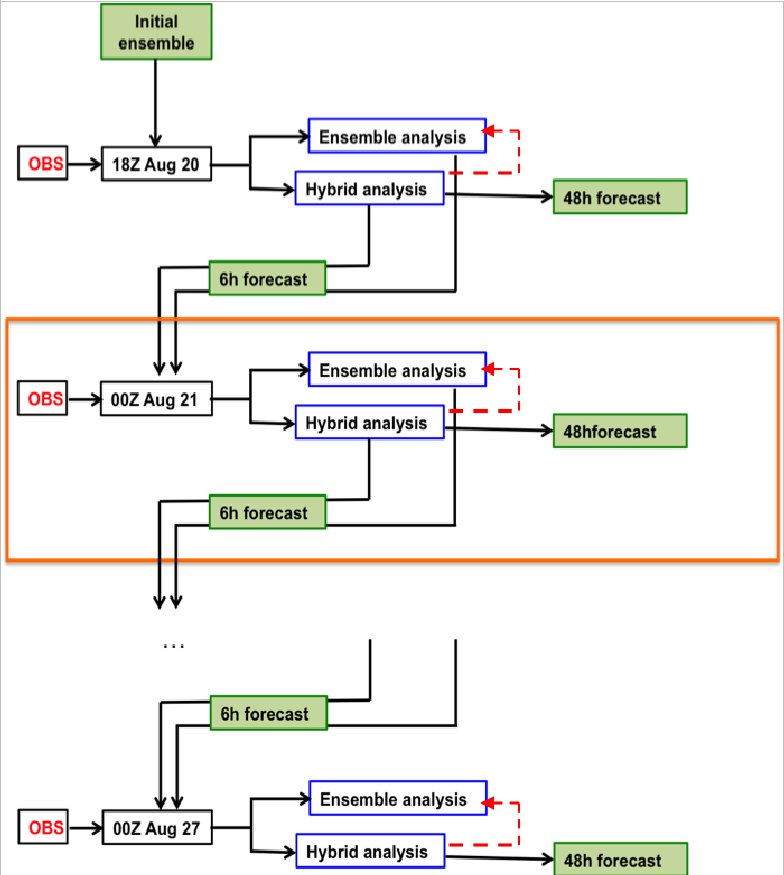Data Assimilation Study for TC intensity

Project Highlights
The hybrid Ensemble Kalman Filter (EnKF)-Gridpoint Statistical Interpolation (GSI) data assimilation system was implemented at NCEP for its Global Forecasting System (GFS) in May 2012. This implementation has brought one of the most significant improvements to global forecasts, including tropical storms. However, many of current operational regional applications still use global ensembles (instead of the regional model ensembles) in their hybrid system. The DTC investigated ongoing research, focusing on improving tropical storm intensity forecasts using regional ensembles in the GSI-hybrid data assimilation system. The DTC set up a complete hybrid EnKF-GSI for the Hurricane WRF (HWRF) system (see Figure 1 for the data assimilation procedure) and used it for the regional ensemble experiments, comparing to the then HWRF (2014) operational system.

Figure 1. Schematic illustration of the hybrid EnKF-GSI data assimilation procedure. Dashed line indicates the optional re-centering step in the hybrid system.
Results show the 2014 operational configuration (Figure 2-green) generated the best intensity scores at analysis time for this case. However, TC intensity biases increased rapidly (positive to negative, "spin-down") and stayed relatively large throughout the rest of the forecast range (Note: a similar spin-down issue was also confirmed using the 2015 HWRF system, but with smaller biases). The GSI hybrid system using GFS ensemble (without vortex initialization, Figure 2-cyan) generated the biggest intensity biases. Two experiments using an HWRF ensemble (Figure 2-red and blue) generate smaller intensity biases for longer forecast ranges beyond 12-24 hours. The two-way hybrid system (Figure 2-blue) was set up based on the GFS data assimilation scheme, using the GSI deterministic analysis to re-center the ensemble members at each analysis time. The one-way hybrid system (Figure 2-red) skipped the re-centering step. This re-centering step was found by reducing the ensemble spread for TC center locations and intensity. Consequently, the one-way hybrid system using regional ensembles performs better than the other systems for TC intensity forecasts beyond 12 forecast hours.

Figure 2. Aggregated bias of (a) Maximum surface wind speed, and (b) Minimum sea level pressure averaging over all the forecasts as a function of forecast lead time.
The DTC also performed experiments to further investigate the initial spin-down issue. This shows that the spin-down issue is associated with the imbalance issue triggered by data assimilation. Experiments show that applying dynamic constraints could help ease such an imbalance. However, it requires more research to find an optimal solution to reduce such imbalance-induced noise while still achieving desirable analysis increments.
